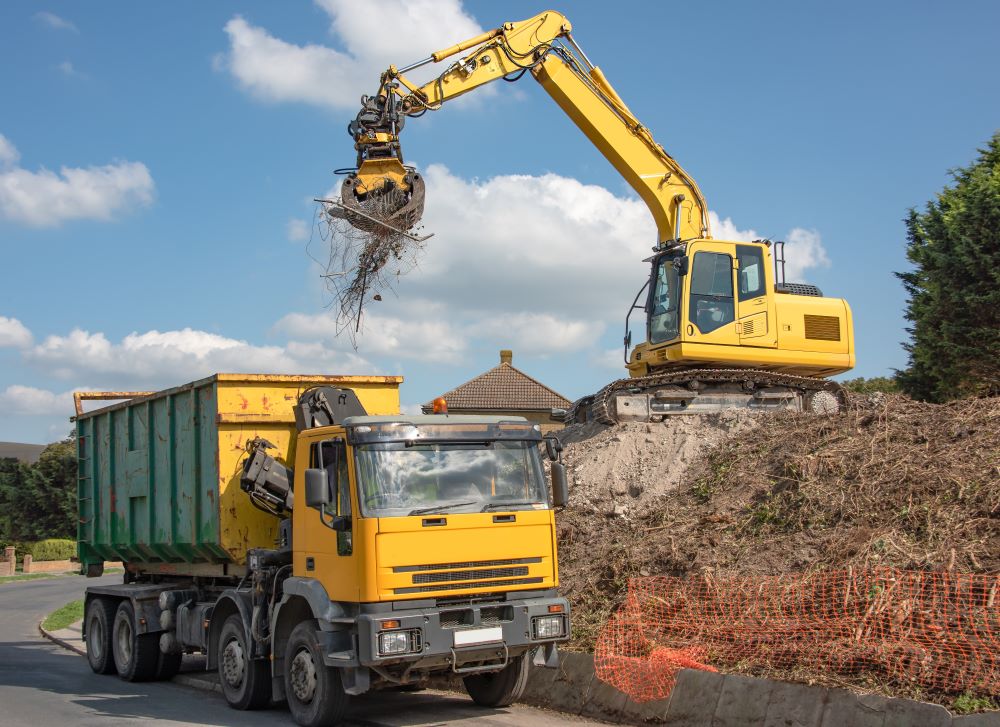
Best Practices in Demolition Services
Are you trying to find the best demolition service practices? You’ve arrived at the ideal location. Demolition is a difficult process that calls for accuracy and knowledge. It is essential to adhere to appropriate protocols while demolishing a building, whether it is a small or large commercial complex, in order to guarantee a secure and effective undertaking.
It is essential to use expert services when it comes to demolition. Professional demolition firms can manage demolition jobs of any scale since they have the equipment, expertise, and experience needed. To guarantee a successful demolition, they are aware of the intricacies of the procedure and adhere to industry best practices.
OUR SERVICES
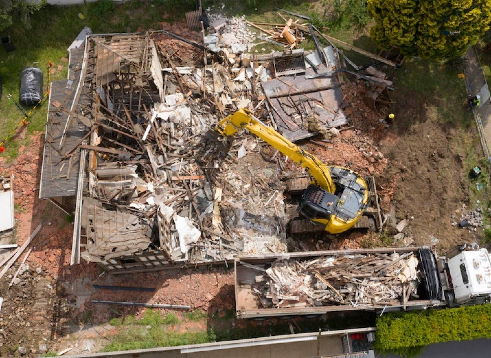
Structure Demolition. Residential, Commercial & Industrial
If your structure poses a health, safety, or environmental risk, demolition can prevent costly citations or fatal accidents. While this may seem daunting, you are just a phone call away from having your residential demolition done professionally, responsibly, and at a great price.
Talk to a Demolition Specialist Now! 916.249.5001
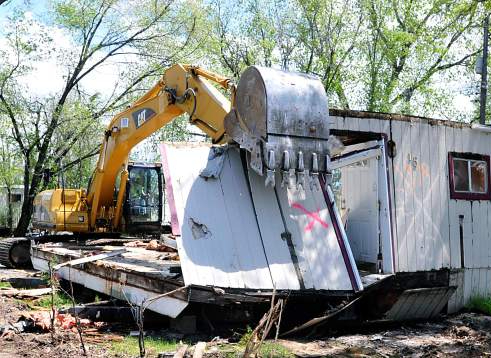
Mobile Home Demolition
We demolish and haul away mobile homes. Any size, anywhere, anyhow. We are fast, clean and competitive. We serve most of Northern California. There are many factors to consider when removing or demolishing your old trailer, mobile home, or manufactured home like: the processes involved, costs, time, contractors, debris, and permits.
Talk to a Demolition Specialist Now! 916.249.5001
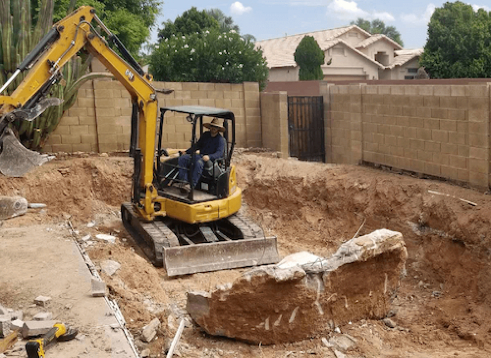
Pool Demolition
When removing a pool in Sacramento, California with the professional demolition team of Maxton Demo, you’re guaranteed peace of mind from beginning to end. From your initial request for an estimate to clean-up, you can expect our pool demolition process that’s completely professional and safe.
Talk to a Demolition Specialist Now! 916.249.5001
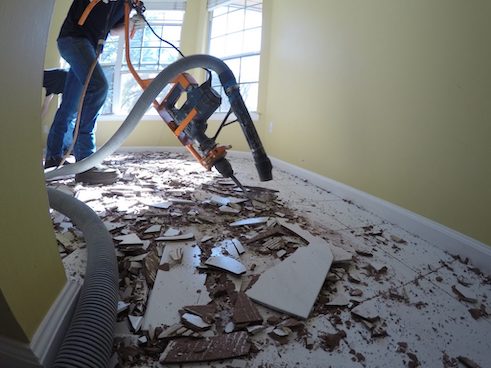
Floor Demolition
Flooring demolition, like any other major home renovation work, requires a specific set of skills and tools to be performed properly. You need experts in flooring demolition to get you the best floors possible. Contact us to find out more about how we can help you today.
Talk to a Demolition Specialist Now! 916.249.5001
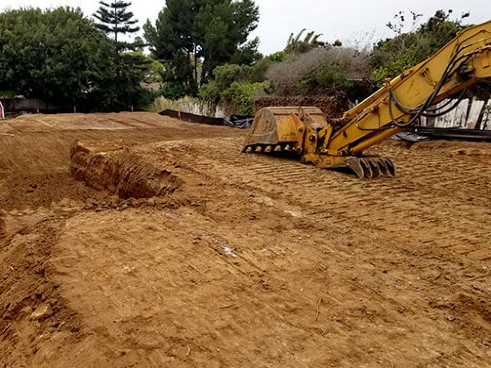
Grading & Excavating
If you need an experienced excavator and grader in Sacramento, call us today. One of the many reasons that residential, commercial, and industrial customers choose to work with us is because we’re able to provide a broad range of services to help construction-related projects get done in less time and at a reduced cost.
Talk to a Demolition Specialist Now! 916.249.5001

Roof Snow Removal
Heavy snow & ice dams can cause significant roof and home damage. Roof Snow removal is our specialty during the winter months. Serving the Sacramento, California area for 10 years, we can get your roof snow removed and promise a quick response and reasonable rates.
Talk to a Demolition Specialist Now! 916.249.5001
Importance of Hiring Professional Demolition Services
Safety is one of the main justifications for hiring specialists. There are inherent dangers associated with demolition operations, including unstable structures, potentially dangerous materials, and accidents. In order to reduce these hazards, professional demolition services put safety first and adhere to tight guidelines. To protect employees and the public, they have qualified and trained staff that understand safety protocols and make use of specialist equipment.
Professional demolition services are also fully insured. This shields you from responsibility in the event that there are mishaps or damage sustained during the demolition process. By dealing with specialists who will manage the project effectively and securely, you may hire pros and feel at ease.
Safety Protocols in Demolition Projects
When it comes to demolition projects, safety comes first. Dealing with possible risks during the demolition of a building includes handling fallen objects, unstable buildings, and potentially dangerous materials like lead or asbestos. To safeguard employees, surrounding properties, and the environment, stringent safety procedures must be followed.
It’s crucial to carry out a comprehensive site evaluation before beginning any demolition work. This includes locating possible dangers such as neighboring power lines, toxic items present, or building vulnerabilities. By doing a preliminary site assessment, you may create a thorough strategy to reduce hazards and guarantee a secure demolition procedure.
Setting up a safety perimeter is crucial to preventing unauthorized people from entering the work area during the demolition. To avoid mishaps and guarantee the security of both employees and the general public, sufficient signs and barriers must be put in place.
All personnel engaged in the demolition should also be given personal protective equipment, or PPE. Hard helmets, safety glasses, gloves, and protective clothes are examples of this. It is vital to provide regular safety training to guarantee that all staff comprehend and follow safety protocols.
Areas We Service
Demolition Contractor Sacramento
Demolition Contractor Nevada City
Demolition Contractor Grass Valley
Demolition Contractor Gold Run
Demolition Contractor Emigrant Gap
Demolition Contractor Soda Springs
Demolition Contractor Tahoe City
Demolition Contractor Twin Bridges
Demolition Contractor Placerville
Demolition Contractor in Roseville
Demolition Contractor in Auburn
Demolition Contractor in Davis
Demolition Contractor in Dixon
Demolition Contractor in Esparto
Demolition Contractor in Folsom
Demolition Contractor in Lincoln
Demolition Contractor in Plymouth
Demolition Contractor in Rocklin
Demolition Contractor in Shingle Springs
Demolition Contractor in Vacaville
Demolition Contractor in Fairfield
Demolition Contractor in Yountville
Demolition Contractor in Antioch
Demolition Contractor in Concord
Demolition Contractor in Walnut Creek
Demolition Contractor in Lafayette
Demolition Contractor in San Ramon
Environmental Considerations in Demolition
Environmental factors are just as important in demolition operations as safety concerns. If demolition is not properly handled, it may produce a large quantity of garbage and harm the environment. Consequently, in order to reduce the environmental impact of demolition, it is essential to use ecologically friendly procedures.
The appropriate handling and disposal of hazardous materials is one of the most important factors. It’s crucial to locate and get rid of any potentially dangerous items, such as asbestos, lead-based paint, or PCBs, before beginning a demolition operation. For the purpose of preventing environmental pollution, this should be carried out in compliance with local laws and regulations.
Additionally, in demolition projects, recycling and trash management have to come first. Many materials, including plastics, metal, wood, and concrete, may be recycled or reused, which minimizes waste and the demand for new resources. It is essential for demolition businesses to have a waste management strategy to guarantee the appropriate sorting and disposal of debris.
Salvable objects, such as fixtures, appliances, or architectural features, may sometimes be sold or given to help the community and lessen trash. You can help the building sector become greener and more ecologically aware by using sustainable demolition techniques.
Tools and equipment used in demolition
In order to guarantee effective and secure operations, demolition calls for certain tools and equipment. Various instruments are employed for various duties in the demolition process, depending on the size and kind of the project.
The excavator is one of the most often used instruments in demolition. Excavators are adaptable vehicles that may be fitted with a wide range of add-ons, including grapples, hydraulic breakers, and shears. These attachments are crucial for demolition operations because they enable the excavator to break through concrete, cut steel, and remove waste.
Other instruments that are often used in demolition work include concrete saws, jackhammers, and sledgehammers. Concrete saws are used to cut through asphalt or reinforced concrete, while jackhammers and sledge hammers are used to knock down concrete or masonry walls.
Wrecking balls or high-reach excavators may be used on bigger buildings. Wrecking balls are big steel balls that are used to bring down big constructions. They are hanging from cranes. Contrarily, high-reach excavators are those that have longer booms that enable them to reach greater altitudes, which makes them appropriate for tearing down towering structures.
Using the appropriate tools and equipment for each duty throughout the demolition process is essential. This guarantees that the job is completed effectively, safely, and with the least possible negative effects on the environment.
Steps in the Demolition Process
To guarantee a successful project, a number of procedures in the demolition process must be followed in a methodical manner. The following phases provide a broad outline of the demolition process, while the details may change based on the project.
Preparation and permits: Careful preparation is necessary prior to beginning any demolition job. This entails creating a thorough demolition strategy and securing the required licenses and authorizations from regional authorities. The construction schedule, safety precautions, waste management techniques, and any unique project issues should all be included in the plan.
Site Preparation: The location must be made ready for destruction when permissions are secured. This includes taking out any equipment, furniture, and fixtures from the building and turning off the utilities, including gas, water, and electricity.
Removal of Asbestos and Dangerous Materials: Qualified personnel must identify and remove any asbestos or other dangerous materials present in the building. By doing this, worker safety is guaranteed and environmental pollution is avoided.
Structural Demolition: The removal of non-load-bearing walls, partitions, and fixtures marks the start of the real demolition process. The removal of load-bearing floors, walls, and roof structures comes next. The kind of building, location, and surrounding environment are some of the elements that influence the demolition technique that is used, whether it be mechanical, human, or a mix of both.
Waste Management and Debris Removal: When the building is being destroyed, there will be debris that has to be controlled and removed from the area. This includes transporting non-recyclable garbage to authorized landfills, separating things for recycling, and properly disposing of hazardous waste.
Cleaning and restoration of the land are necessary when the building has been entirely dismantled. This includes preparing the area for future building or usage, leveling the ground, and clearing away any leftover waste.
By going through the demolition process according to these phases, you may minimize hazards and guarantee a successful project by using a methodical and effective approach.
Recycling and Waste Management in Demolition
Waste management and recycling are crucial components of demolition operations. Waste from demolition must be managed properly to reduce its negative effects on the environment and advance sustainability.
Sorting materials is one of the most important aspects of recycling and waste management in the demolition industry. Many materials may often be recycled or used again, including concrete, metal, wood, and polymers. On-site spaces that are set aside for the sorting and storage of these goods are crucial. This lessens the quantity of garbage dumped in landfills and makes it simpler to transfer to recycling facilities.
Hazardous items must also be handled and disposed of appropriately. As stated previously, only qualified specialists should identify and remove hazardous items such as asbestos, lead-based paint, or PCBs. To avoid environmental pollution, these items should be disposed of in compliance with local rules.
Additionally, demolition firms must collaborate with trash management and recycling services. By ensuring that materials are handled and transported properly, demolition operations have a less negative environmental effect. Supporting waste management and recycling helps create a more sustainable building sector.
Cost Factors in Demolition Services
A number of variables may affect how much demolition services cost. When selecting a demolition business, having a clear understanding of these cost considerations can help you manage your budget and make wise selections.
The size and complexity of the building that has to be destroyed are two of the main cost-determining elements. Larger constructions might cost more to build overall since they need more time, labor, and equipment. Furthermore, the cost may also be affected by the existence of dangerous materials like asbestos or paint with lead content. It might cost more to remove and dispose of these items properly since it calls for certain knowledge.
The cost of demolition services might also be influenced by the structure’s location. Extra safety precautions and procedures may be needed if the structure is in a heavily populated location or has restricted access, which might raise the cost.
Additionally, the cost may vary depending on the destruction technique used. In general, mechanical demolition is more costly than hand demolition since it requires the use of large machines. Nonetheless, mechanical demolition may shorten the project’s total length and is often more effective.
Lastly, the cost may also vary depending on how long the demolition job takes to complete. Projects that are urgent or have a tight deadline may need more staff and resources, which might raise the cost of the project.
To evaluate prices and services, it’s crucial to get many estimates from reliable demolition firms. When making your selection, don’t forget to take the company’s expertise, standing, and safety record into account in addition to the price.
Common Challenges in Demolition Projects
Projects involving demolition may come with a number of difficulties that must be resolved to guarantee success. Understanding these difficulties will enable you to prepare and reduce any hazards.
Managing unforeseen structural issues is one of the major difficulties encountered in demolition. Unexpected circumstances or concealed structural flaws may be discovered as the demolition moves further. These might be unanticipated load-bearing components, faulty foundations, or concealed utility lines. Appropriate action may be taken by identifying possible issues in advance via proper site evaluation and planning.
During the demolition operation, controlling dust and debris is another difficulty. Dust may affect the environment and neighboring homes in addition to being a health risk. By putting dust management measures in place, such as water sprays or dust suppression equipment, you may reduce the amount of dust that spreads and make the workplace safer.
Furthermore, vibration and noise may pose serious problems for demolition operations, particularly when they occur close to sensitive buildings or in metropolitan areas. It’s crucial to think about how noise and vibration may affect neighboring properties and to take the necessary precautions to reduce disturbances. This may include the use of vibration monitoring equipment, work hour limitations, or noise barriers.
Lastly, there may be difficulties with public image and community relations during demolition projects. The neighborhood may be inconvenienced and disrupted by demolition, so it’s critical to communicate and resolve any issues or complaints that may arise. Building trust and reducing conflict may be achieved by keeping the community informed about the project and by keeping lines of communication open.
Through early steps and awareness of frequent problems, you may guarantee a more successful and seamless demolition job.
Emergency Demolition Services: Responding to Urgent Situations
Emergency demolition services are essential in instances where threats need to be mitigated immediately. When a risky scenario calls for quick care, such as in the case of a collapsed building or hazardous construction, these specialist services are indispensable. Modern tools and years of experience enable emergency demolition crews to tackle even the most difficult circumstances.
Emergency demolition services are designed to react to critical circumstances quickly and effectively. These highly skilled experts evaluate the circumstances, plan the demolition operation, and carry it out precisely and safely. Clients’ and their communities’ well-being is given first priority, which guarantees that risks are reduced and appropriate safety measures are implemented.
It is impossible to overstate the seriousness of emergency circumstances. Since time is of the essence, having a trustworthy emergency demolition service provider on hand is essential to guaranteeing a timely response. We at Maxton Demo are aware of the gravity and urgency of these circumstances. In order to safeguard people, their belongings, and the environment, our team is committed to providing prompt and dependable emergency demolition services. You may rely on us to manage emergencies with the highest expertise and care.
Common situations that require emergency demolition
Many critical circumstances call for emergency demolition services. When a building or other structure collapses, this is one typical situation that necessitates these services. This can be the consequence of a structural breakdown or a natural calamity like an earthquake or a strong storm. Under such circumstances, prompt action is required to stop more harm and guarantee the protection of others around.
Another circumstance that often calls for immediate destruction is when a building becomes dangerous. This can be the result of a fire, water damage, or any other issue that directly endangers the security of people or property. Emergency demolition is necessary in these situations in order to remove the danger and stop any possible mishaps or casualties.
Furthermore, when a hazardous issue arises that has to be addressed right away, emergency demolition services are often required. This might apply to circumstances where a building is about to collapse or where there is a chance that a structure could fall and damage adjacent buildings or roadways. Emergency demolition crews are sent in these situations to safely and effectively demolish the building while reducing the danger to the neighborhood.
The importance of quick response in emergency demolition
Time is of the essence when it comes to emergency demolition. In order to reduce hazards, guarantee safety, and stop more harm, quick reaction and action are essential. A dangerous scenario increases the likelihood of accidents, injuries, and property damage the longer it lasts. For this reason, having a dependable and effective emergency demolition service provider on hand that can act quickly is crucial.
When it comes to emergency demolition, prompt action reduces dangers and keeps things from getting worse. Emergency demolition specialists can create a plan to safely and effectively destroy the building by quickly evaluating the circumstances. This guarantees the safety of emergency responders as well as the surrounding surroundings, in addition to safeguarding the lives and property of people who are immediately impacted.
In addition, prompt emergency demolition speeds up the rehabilitation procedure. Reconstruction or cleaning work may start as soon as the dangerous structure is taken down, facilitating a seamless return to routine. This is especially crucial in situations where buildings or other structures are located in commercial or heavily populated regions, since delays may have detrimental effects on the economy and society.
Safety considerations in emergency demolition
When it comes to emergency demolition, safety comes first. The safety of everyone concerned, including emergency personnel, surrounding residents, and anybody else in the area, must come first. During the emergency demolition procedure, a number of factors need to be taken into account to guarantee safety.
Firstly, before beginning any demolition work, a comprehensive risk assessment is carried out. Potential dangers like unstable buildings, potentially dangerous chemicals, or potentially impacted utility lines are identified with the use of this examination. Appropriate safety precautions may be implemented to safeguard all parties by being aware of the hazards involved.
Safety during emergency demolitions also depends on careful planning and cooperation. This entails creating a thorough plan that specifies the demolition process, the tools to be used, and the safety procedures to be observed. Accidents and injuries may be reduced by adhering to a planned schedule.
Emergency demolition crews also go through extensive training to make sure they have the abilities and know-how needed to do the task safely. They get training in applying safety procedures, identifying and managing dangerous items, and using equipment correctly. Through this training, the team’s members are better equipped to manage any emergency that may happen.
Steps involved in emergency demolition
For emergency demolition to be both safe and effective, there are a number of different procedures involved. These actions are meticulously designed and carried out to reduce risks and stop more harm. An outline of the common procedures involved in emergency demolition is provided below:
Assessment and evaluation: Analyzing the circumstances and the associated hazards is the first stage. This entails examining the building, spotting any risks, and choosing the best course of action.
Strategy development: A demolition plan is created in accordance with the evaluation. This includes choosing the demolition order, the tools to be utilized, and any required safety measures.
Safety preparations: Safety measures are taken prior to beginning any demolition work. This might include putting up safety barriers, locking off the location, and making sure the right lines of communication are open.
Equipment setup: The required equipment is brought in and set up when the safety procedures are finished. This might use wrecking balls, cranes, excavators, or other specialist equipment.
Execution of the demolition: After setting up the necessary tools, the demolition procedure starts. The building is methodically disassembled or destroyed in accordance with the planned plan, making sure that all safety precautions are taken.
Debris removal: Following the completion of the demolition, the site is cleared of debris. Sorting and properly discarding any dangerous items may be necessary to comply with the rules.
Site cleanup: after the removal of debris, the site is meticulously cleaned to guarantee that it is secure and prepared for the next stage, which may include more evaluation or rebuilding.
Emergency demolition teams may guarantee a safe and effective procedure that reduces hazards and promotes a seamless recovery by adhering to these guidelines.
Hiring a professional emergency demolition company
It is crucial to work with a reputable business that specializes in emergency demolition and is both competent and skilled. To efficiently address emergency circumstances, a professional emergency demolition firm combines a lot of experience, knowledge, and resources.
Reaction time is one of the main advantages of working with a competent organization. These businesses have the infrastructure in place to quickly deploy their staff and equipment because they recognize the importance of emergency circumstances. This makes it possible to respond quickly and reduces waiting times, guaranteeing that hazards are reduced as soon as feasible.
Expert emergency demolition firms have vast expertise in a wide range of emergency circumstances. They are well-versed in the necessary safety procedures and possess a thorough awareness of the complications involved in tearing down dangerous buildings. This knowledge guarantees that the demolition procedure is executed precisely and causes the least amount of disturbance to the surrounding region.
Professional emergency demolition firms also have access to cutting-edge methods and modern equipment. To guarantee the most successful and efficient demolition procedures, they make investments in cutting-edge technology. This improves safety while simultaneously cutting down on demolition time, enabling a quicker recovery process.
It is crucial to take into account a demolition company’s reputation and track record when choosing one for an emergency. Seek out businesses that have successfully finished projects comparable to yours in the past and have received great feedback from prior customers. You will feel more confident in their capacity to manage your particular emergency scenario as a result.
Equipment and techniques used in emergency demolition
For emergency demolition to be both safe and effective, certain tools and methods are needed. Skilled emergency demolition firms manage a variety of buildings and dangerous circumstances with a variety of instruments and technology.
The excavator is one type of equipment that is often employed. Excavators are adaptable vehicles that may be fitted with various add-ons, including hydraulic breakers or shears, which enable them to efficiently demolish buildings. For demolition operations involving emergency situations, their power and mobility are perfect.
The crane is another piece of equipment that is often utilized. During the demolition process, cranes are utilized to move large, heavy items and trash. They guarantee that the debris is securely transported from the site and provide the power and reach required to manage large-scale demolitions.
Techniques for explosive demolition may be used in certain situations. These methods include the careful use of explosives to swiftly and securely bring down buildings. This approach may be very successful in certain circumstances, but it does need careful preparation and execution.
Emergency demolition crews use a variety of procedures in addition to equipment to guarantee efficiency and safety. These methods include using dust control techniques to reduce environmental effects, stabilizing buildings with temporary bracing, and adhering to stringent safety regulations throughout the demolition process.
The safety of all parties involved and the least amount of disturbance to the surrounding environment may be ensured by emergency demolition teams working with accuracy and the appropriate tools and methods.
In emergency demolition, cost concerns and insurance considerations
Demolition during an emergency may be a costly and time-consuming task. When making plans for emergency demolition services, it’s important to take a number of elements into account that might affect the final cost.
One of the key elements influencing emergency demolition costs is project complexity. Large buildings and hazardous chemicals are examples of more difficult undertakings, which often call for more resources and experience and higher expenses.
Another thing to think about is how urgent the problem is. Because emergency demolition services require quick reaction times and resource mobilization, they are often more expensive. This makes sense given the urgency of these projects and the need for skilled workers and specialized equipment.
Insurance is another important factor to take into account while doing emergency demolition. It is crucial to confirm that emergency demolition services and any possible liabilities that can develop during the procedure are covered by your insurance policy. Speak with your insurance company to learn about the scope of coverage as well as any unique conditions or restrictions.
It’s also a good idea to deal with an emergency demolition business that has the necessary insurance. This gives everyone concerned peace of mind by guaranteeing that any possible damages or accidents that can happen during the demolition process are suitably covered.
To make sure you are appropriately prepared for the financial parts of the project, it is imperative that you take these cost variables and insurance concerns into account while preparing for emergency demolition.
Case studies of successful emergency demolition projects
Let’s look at a few case studies of accomplished projects to highlight the value and efficacy of emergency demolition services.
Rescue of a Collapsed Building
A building in a heavily populated metropolitan region fell as a result of a structural breakdown brought on by a lot of rain. In order to evaluate the situation and create a demolition plan that would guarantee the security of the nearby buildings and people, the emergency demolition crew was called in.
In order to prevent further damage, the crew promptly mobilized and started the demolition operation, gently taking down the fallen building. They removed debris while maintaining the integrity of nearby buildings by using specialist equipment.
The team’s quick thinking and effective work allowed them to finish the demolition without suffering any further damage or injuries. The emergency demolition team’s prompt action allowed the people impacted by the collapse to recuperate and rebuild.
Hazardous Materials Containment
A chemical storage facility caught fire in an industrial area, creating a dangerous scenario. To securely demolish the damaged building and stop the spread of dangerous materials, the emergency demolition crew was brought in.
Considering the presence of dangerous chemicals, the crew used specialist procedures and equipment to gently deconstruct the building. Strict safety procedures were put in place to safeguard the environment and guard against any possible health hazards.
The crew successfully confined the hazardous chemicals and stopped any additional damage or contamination by carrying out the demolition quickly and efficiently. After the region was deemed safe, cleaning and recovery operations could start.
These case studies show how important emergency demolition services are for reacting quickly to crises, saving lives, and speeding up the healing process.
Conclusion: The importance of being prepared for emergency demolition situations
When reacting to life-threatening emergencies, emergency demolition services are an essential part of the response. Emergency demolition crews are prepared to take on any task, including dangerous situations requiring quick care, collapsed buildings, and hazardous structures.
Emergency demolition services guarantee that dangers are reduced and the recovery process may start right away by emphasizing safety, acting quickly, and using cutting-edge methods and tools. Hiring a qualified and skilled emergency demolition firm that specializes in these services is essential when confronted with an emergency.
Understanding the procedures involved in the demolition process, taking insurance into account, and keeping cost and insurance-related concerns in mind are all necessary for being ready for emergency demolition circumstances. You may lessen an emergency’s effects and promote a speedy recovery by considering these variables and having a strategy in place.
We’re committed to providing emergency demolition services that are both quick and efficient while also protecting people and the environment. You may rely on us to act quickly in critical circumstances, safeguarding people and property while assisting with the healing process. You may count on [brand name] for dependable services and skilled knowledge in emergency demolition.
Demolition is a difficult operation that has to be planned carefully, done safely, and with sustainability and the environment in mind. For a demolition job to be both safe and effective, hiring experienced demolition services is essential. Professionals are equipped with the skills, tools, and information needed to manage the difficulties and complexity of demolition.
The public’s and employees’ safety can be guaranteed, risks can be reduced, and the environment can be preserved by adhering to the best practices described in this article. These best practices are critical to a successful demolition project, from carrying out an exhaustive site evaluation to putting appropriate recycling and trash management procedures in place.
For any demolition project, whether you’re a developer, contractor, or homeowner, knowing and following these best practices is essential. You can guarantee a seamless demolition process that satisfies your objectives and conforms to the rules by collaborating with experts, placing a high priority on safety, and using sustainable methods.
Do not hesitate to contact reputable demolition businesses in your neighborhood if you’re searching for the top demolition service techniques. They may provide professional guidance, support, and solutions made just for your project. Recall that demolition is a serious undertaking and that you may achieve success and peace of mind by adhering to the proper procedures.